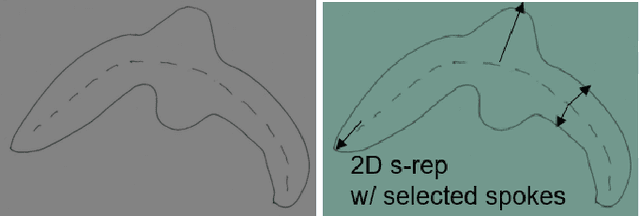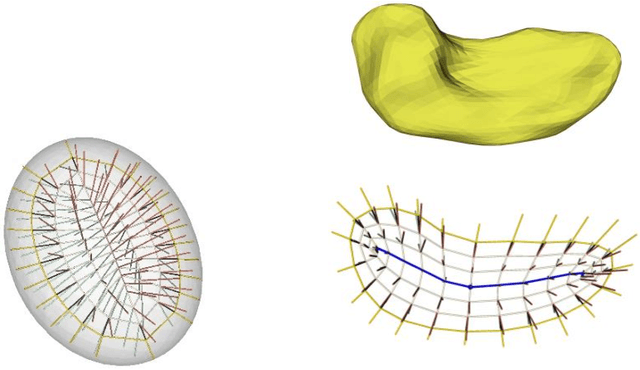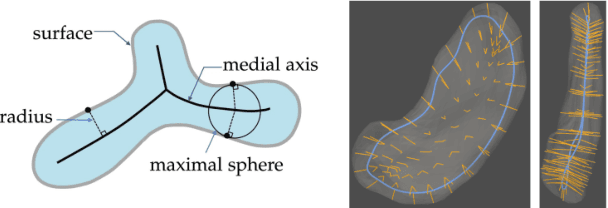Jared Vicory
Fitting Skeletal Models via Graph-based Learning
Sep 09, 2024Abstract:Skeletonization is a popular shape analysis technique that models an object's interior as opposed to just its boundary. Fitting template-based skeletal models is a time-consuming process requiring much manual parameter tuning. Recently, machine learning-based methods have shown promise for generating s-reps from object boundaries. In this work, we propose a new skeletonization method which leverages graph convolutional networks to produce skeletal representations (s-reps) from dense segmentation masks. The method is evaluated on both synthetic data and real hippocampus segmentations, achieving promising results and fast inference.
* This paper was presented at the 2024 IEEE International Symposium on Biomedical Imaging (ISBI)
Interior Object Geometry via Fitted Frames
Jul 19, 2024



Abstract:We describe a representation targeted for anatomic objects which is designed to enable strong locational correspondence within object populations and thus to provide powerful object statistics. The method generates fitted frames on the boundary and in the interior of objects and produces alignment-free geometric features from them. It accomplishes this by understanding an object as the diffeomorphic deformation of an ellipsoid and using a skeletal representation fitted throughout the deformation to produce a model of the target object, where the object is provided initially in the form of a boundary mesh. Via classification performance on hippocampi shape between individuals with a disorder vs. others, we compare our method to two state-of-the-art methods for producing object representations that are intended to capture geometric correspondence across a population of objects and to yield geometric features useful for statistics, and we show improved classification performance by this new representation, which we call the evolutionary s-rep. The geometric features that are derived from each of the representations, especially via fitted frames, is discussed.
Skeletal Point Representations with Geometric Deep Learning
Mar 03, 2023



Abstract:Skeletonization has been a popular shape analysis technique that models both the interior and exterior of an object. Existing template-based calculations of skeletal models from anatomical structures are a time-consuming manual process. Recently, learning-based methods have been used to extract skeletons from 3D shapes. In this work, we propose novel additional geometric terms for calculating skeletal structures of objects. The results are similar to traditional fitted s-reps but but are produced much more quickly. Evaluation on real clinical data shows that the learned model predicts accurate skeletal representations and shows the impact of proposed geometric losses along with using s-reps as weak supervision.
 Add to Chrome
Add to Chrome Add to Firefox
Add to Firefox Add to Edge
Add to Edge